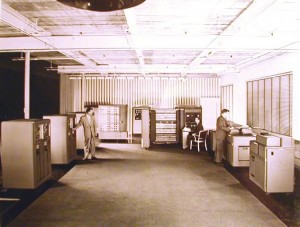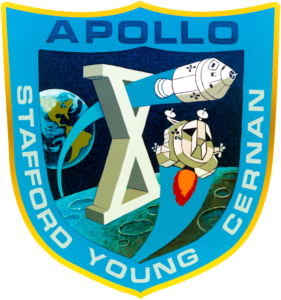The Wright Patent
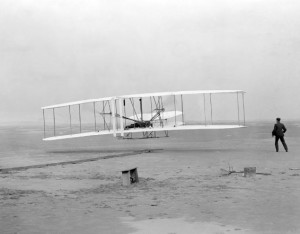
Orville and Wilbur Wright are granted the first airplane patent in the U.S. for their “new and useful improvements in Flying Machines.” (US No. 821,393)
The Empire Strikes Back
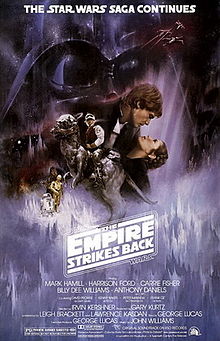
The sequel to the the smash success Star Wars, The Empire Strikes Back is released on this day, almost exactly 3 years after the release of the original film. The pioneering use of special effects technology in the Star Wars Trilogy transformed the movie industry.
IBM Announces the “Defense Calculator”, Model 701
May 21, 1952
The IBM 701 was the company’s first commercial scientific computer, but I guess they figured that calling it a “calculator” would help it sell better. Perhaps they were right, because only expecting to sell five, the company ended up selling nineteen to government, large companies, and universities.
First Female to Fly Solo Across Atlantic
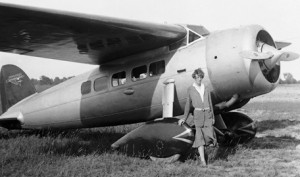
Five years to the day after Charles Lindbergh took off on his historic first solo flight across the Atlantic, Amelia Earhart takes off from Newfoundland. While her original destination was France, weather and mechanical problems force her to land in Ireland nearly 15 hours after she took off. She become the first woman and second person to fly solo across the Atlantic Ocean.
First Solo Flight Across the Atlantic
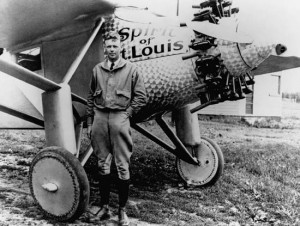
Aboard the “Spirit of St. Louis” monoplane, Charles Lindbergh takes off from Roosevelt Field in New York on his historic first solo flight across the Atlantic Ocean. He will arrive in France 33.5 hours later.
Apple Cube Store Opens in NYC
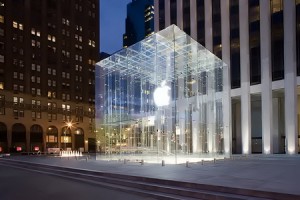
Apple opens their second store in New York City, a 20,000 square-foot shop at the underground concourse of the General Motors building at 767 Fifth Avenue. Open 24-hours a day, the shop is visible at street level through a 32-foot glass cube. Designed by Apple’s CEO Steve Jobs at a cost of $9 million, people stood in line for hours prior to the store’s opening.
Apple Debuts Retail Stores
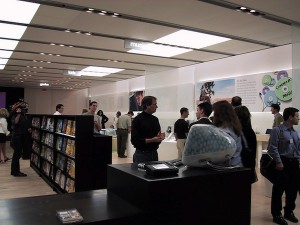
Apple Computer opens the first two locations of their new retail stores in McLean, Virginia and Washington, D.C. In the first weekend of opening, the stores will attract 7,700 shoppers and will sell a combined $599,000. While ridiculed by many technology “experts” at the time, the Apple Stores have been insanely successful and was one of the key reasons for Apple’s resurgence in the 2000’s.
Apple III Introduced
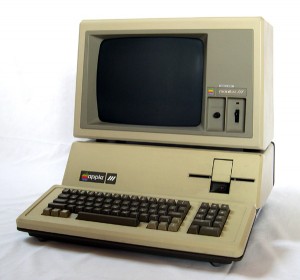
At the National Computer Conference in Anaheim, California, Apple Computer introduces the Apple III. It is the company’s first attempt at a business computer, its first departure from the Apple II architecture, and it will also become Apple’s first real failure. Apple expects the Apple III to be released in July, but in one of the worst cases of delay in tech history, the system wouldn’t reach stores until January. Once released, the Apple III will be plagued by component failures that would ultimately lead to large recalls. The Apple III never recovered from it’s original negative reception and was discontinued by Apple in 1984
Antitrust Suit Filed Against Microsoft
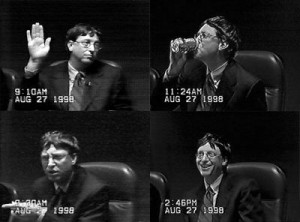
The United States Justice Department and the Attorneys Generals of twenty states plus the District of Columbia file an antitrust lawsuit against Microsoft. The case focuses on Microsoft’s integration of the Internet Explorer web browser into its Windows 98 operating system. The trial becomes one of the most famous events in tech history, eventually resulting in a settlement between the DOJ and Microsoft. In fact, the sanctions levied against Microsoft lasted until May of 2011, almost exactly 13 years after the suit was filed.
Launch of Apollo 10
Apollo 10 launches from the Kennedy Space Center. It would be the final “dress rehearsal” flight to the moon before Apollo 11 would make the first Moon landing two months later. NASA had considered making Apollo 10 the first Moon landing, but mission planners decided that it would be best to have a practice flight where all systems and procedures were tested up to the point where the lunar module would actually make powered descent to the Moon. Apollo 10’s lunar module, given the call sign “Snoopy” would make it to within 15 kilometers of the Moon’s surface, taking pictures of the proposed Apollo 11 landing site and testing the lunar module’s landing radar. It would dock back with the command module, given call sign “Charlie Brown”, after nearly 8 hours in orbit.
Apollo 10 holds some interesting distinctions. It was the first mission to carry a color TV camera so Earth viewers received the first color TV images of the planet. Apollo 10’s crew was the first to successfully shave in space. Apollo 10’s crew also set the record for the fastest speed any humans have traveled relative to Earth. Ultimately, the thorough testing of systems, photographs of the Moon’s surface, and data returned from the Apollo 10 mission cleared the way for Apollo 11 to make the first human landing on the Moon.

